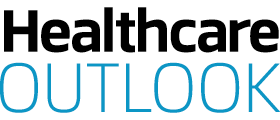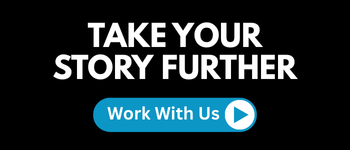Iffi Wahla, co-Founder and CEO of global hiring platform Edge, discusses how medical practices can leverage AI to improve service and profitability.
Running an efficient and profitable medical practice in today’s healthcare landscape requires balancing a huge range of factors – many of which are out of the business owner’s hands – not least rising costs and regulatory complexities.
However, when it comes to administration and staffing, technological developments and changing working practices open the door to practices gaining huge efficiencies and improvements to the customer experience. One of the major changes I am talking about is, of course, artificial intelligence (AI).
Since ChatGPT launched at the end of 2022, professionals across the world and in nearly every industry have started to ask themselves what AI could do for their organization.
The answer, as many have discovered, is that it can do an extraordinary amount, so much so that it can be hard to know exactly where to begin.
SIMPLE APPLICATIONS
The truth is that some of the most obvious and achievable benefits can be found in the more simple applications of AI, such as automating routine tasks, business intelligence, speeding up communications and improving staff assessment and performance.
Although these applications may not sound as exciting as using AI to design new drugs or diagnose conditions, they have the capacity to profoundly change how most people experience healthcare.
Indeed, for most healthcare professionals, AI-enabled automation of administrative and back office functions is likely to account for the majority of their ‘AI experience’ in the medium term.
So, how can medical practices leverage AI to become ultra efficient while at the same time improve the patient experience?
The first step is to understand where the real pain points and inefficiencies are in your medical practice.
Research has time and time again highlighted three main complaints about the doctor’s office – poor communications, negative staff attitudes, and clinical treatment. This is in addition to slow response times, lack of availability, and a subpar checkout experience.
For physicians, challenges include a lack of time with patients due to time on administration or regulatory compliance, staffing shortages, ethical dilemmas, and financial constraints.
According to our own research, on average, practices miss 35 percent of their calls due to understaffing and 34 percent of doctors worldwide have observed an increase in medical errors due to staff shortages and stress.
A lack of available talent in the US is compounding the issue; last year, 1.5 million fewer people participated in the workforce. This now means that it takes, on average, three months to fill an open front office position.
Retention is also a problem – most office hires leave within a year with many citing workplace stress due to staff shortages.

EFFICIENT RECRUITMENT
For the majority of medical practices, staff shortages, and retention problems will be the root cause of a lot of systemic issues. Luckily, this is where AI can make a real difference.
An end-to-end AI-driven recruitment process can vastly reduce the time it takes to find and onboard staff. It can also allow for more precise targeting of applications and a fairer, unbiased process.
The easiest starting point is to use generative AI to create job descriptions, the application process, and job adverts. From there, you can use AI applications to create automated resume screening to instantly identify the people you really want to interview.
One of the added bonuses of automated screening using AI is that the algorithm can be trained to find exactly the type of personality you would want working in your office. AI can go beyond simply reviewing qualifications to looking at the attributes of the individual hidden in their resume or application.
Remember, at the outset, it is key to have human oversight over this process. Review a sample of rejected applications to ensure you and your AI are of the same mind.
A good AI recruitment system will become more and more accurate as it understands the type of applicant that you ultimately end up hiring.
AI itself can also help challenge you on what you consider to be an ideal recruit. It may be that some hiring and retention issues come down to the recruiter not really understanding who the best fit for their office is. An AI screening process may bring forward people that you may have otherwise rejected.
When it comes to the interview process itself, AI can also help with generating questions and creating metrics on which you can assess individuals. You can even let an AI system analyse the responses and make the recommendation on the best hire.
After recruitment, AI-driven digital onboarding can vastly reduce the administration and time taken to bring new staff up to speed. It can be used to create tailored training programs and assess progress.
TIME AND COST SAVINGS
Even if you use AI to automate just one aspect of your recruitment process, it will impart significant time and cost savings. From there, you can look at other ways it can improve the administration of your practice.
The most obvious opportunity is through automating scheduling and communication with patients. AI chatbots embedded into your website can answer routine questions and funnel patients into the right communication channels.
An AI scheduler can also ensure that appointments are booked in the most efficient manner. By using AI within your customer relationship management (CRM) software, you can create automated triggers which keep patients updated with the latest news on their appointments, test results, and other regular queries.
As you get used to AI, you can bring it into other functions such as invoicing and financial management. However, before we get too far ahead of ourselves, it’s important that you create some ground rules and a strategy that will allow you to use AI services in a safe and thoughtful manner.
AI OVERSIGHT
It’s worth remembering that no AI system is infallible – it requires a strong degree of oversight to ensure that it is functioning in the way it was intended.
To be able to do this, you and your team need to understand the fundamentals of how AI operates, and this requires at least a rudimentary understanding of data analysis.
Luckily, this can be easily acquired through online training. The key is to ensure that these skills are dispersed throughout your practice so that every staff member feels empowered to question when the AI system may be malfunctioning.
Oversight means regularly verifying outputs, particularly communications to patients and the scheduling of appointments. Patients should also have the ability to circumvent your AI systems to talk directly to your staff or highlight when they think something has gone wrong with your processes.
If you like the idea of AI but the whole process of getting it up and running and then overseeing it seems too difficult, don’t worry – a whole ecosystem of businesses has grown up to provide and administer these services and tools.
The best way to get started is to start small, choose a problem that AI can solve, and then find the tool or service you believe provides the best solution.
After you, your team, and patients have got used to how AI operates and verified that it provides the return on investment (ROI) you expected, you can expand it to other aspects of your practice.
This incremental approach enables you to mitigate risk and reverse decisions with minimal cost and disruption if required.


























